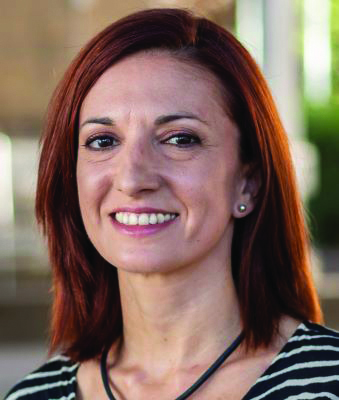When we speak about creativity, we might imagine a lonely, tortured artist working feverishly in a darkened studio long into the night. But could ideas that come out of a corporate meeting room be considered creative?
Michaelangelo and Picasso are well-known creative geniuses. Their creativity flourished within the bottega (workshop) surrounded by other apprentices or in artistic circles that fostered debate and discussion. Corporate creativity could be cast in a similar vein.
Artists do not have a monopoly on creativity. Dr Margaret Mangion and Dr Leonie Baldacchino from the Edward de Bono Institute (University of Malta) point out that, although many people associate creativity exclusively with the arts and cultural industries, it is widespread in many different domains including business, and it is relevant in all sectors. Baldacchino notes that creativity is needed at every level of every type of organisation. Mangion adds that creativity is not limited to outstanding achievements but even a seemingly insignificant act like browsing through your fridge to prepare dinner may be a creative act. If one can ‘better organise [one’s] day or write a report in a new or more effective way, then this is every bit a creative act.’
Creativity, which refers to the generation of ideas that are original and useful, and by extension innovation, which is the implementation of creative ideas, are highly valued at executive levels. In a study by the IBM Corporation, 1,500 chief executive officers from around the world classified creativity as a leader’s key quality. Creative thinkers such as Edward de Bono who look at creativity from a practical stance (and develop the tools to prompt it), have turned creativity into something akin to a muscle that can be exercised.
Baldacchino and Mangion both see creativity as a skill which can be taught and cultivated. If upper management wants to foster a creative workforce, there are tools and environments they can implement which will encourage it. But what helps creativity flourish?
Motivation
Without the proper motivation, you can forget about any work getting done — let alone something creative. But motivation is far more nuanced than your pay cheque. Your salary is an extrinsic motivator. Another motivator is wanting to see a project through. For many creatives, there is a strong ‘want’ to see a project run successfully. This, coupled with an inherent interest in doing the task, can be a positive influence, especially in the business world.
This intrinsic motivation is a more powerful incentive. It’s also known as passion, a fantastic motivator. Without a strong sense of passion for your work, the task at hand can quickly become a chore. Personal projects make us feel invested, leaving us excited because we want to rather than because we have to. Individuals are most creative when they find what they are doing interesting, satisfying, and enjoyable.
Oddly enough, in his study ‘What makes the creative, creative?’ Matthew Maggiani points out that expected rewards reduce intrinsic interest but unexpected rewards do not. Providing creatives (such as the author of this article *bats eyelashes*) with a bonus, or even a small gesture of gratitude can help motivation.
What about fear, I hear you graduates from the Stalin School of Management cry. While failure can be used to learn and develop new techniques, fear (itself an extrinsic motivator) can actively harm the creative process. Baldacchino points to Malta, where it seems as though everyone knows everybody else. Failure, like success, is easily visible and becomes widely known. This lack of anonymity and privacy may serve as a deterrent for creatives, and fear of failure often undermines creative and entrepreneurial activity.
Stepping out of the corporate world for a moment, imagine an art lesson where the teacher constantly criticises a student’s work. This would stifle creativity. Instead of fear, an environment that supports its staff gives creatives the space to experiment and innovate.
Environmental influences
A study by Maryna Grechna (a former Master in Creativity and Innovation student at the Edward de Bono Institute) showed the increased reliance on staff’s creative and innovative thinking abilities. This has encouraged organisations to nurture a positive work environment, one that allows employees to freely explore their creative potential.
Big technology companies like Google and Apple invest heavily in work environments that bolster their employees’ creative output. Miggiani interviewed several creative directors. They point out that a physical environment that allows comfortable seating, light, good temperature, and the space to move around can contribute towards creative behaviour.
A positive work environment is not limited to physical space. Being surrounded by a talented and supportive workforce helps to foster creativity. One participant in Miggiani’s study mentions how being around talent and people that they like ‘empowers’ them. Being part of a supportive staff can allow creatives to psychologically relax and be happy. It might seem obvious, but Miggiani’s research shows that being happy at work makes you more productive and instinctively makes you want to work more.
Research by Zelenski, Murphy, and Jenkins shows that ‘at a trait level, happy people are more productive, and people are more productive when they are happy.’
Being surrounded by talented individuals, feeling that we are part of something bigger, and being part of an environment where we feel that we are valued is not only beneficial for our well-being, but allows us to fully realise our potential. It is the main reason why teachers go to such lengths to create a positive classroom culture in order to bring out the best in their pupils.
Creative Management
During our interview, both Baldacchino and Mangion mention the need for a ‘creativity champion.’ Someone who drives the project and manages the entire process. Miggiani points out that Creative Directors are meant to be enterprising thinkers that have an eye for detail with an avid business sense. Their central goals are to come up with novel ideas that can carry a company’s brand, product, marketing, advertising, web, or media development objectives.
The creative team needs to be ‘managed’ in a way that is understanding and compassionate — in a way that does not negatively impact the team dynamic. Therefore, it is likely that a supportive leader will help employees be more creative. On the other hand, controlling, critical leadership inhibits creativity.
The key to management is finding people who ‘fit’ with the rest of the staff. Each individual brings something unique to the table. It is not just about replacing a skill set but maintaining the harmony within the entire team. While on their CVs, two candidates might be virtually identical, one might be a better fit because they contribute to the natural back-and-forth found in a creative space.
Baldacchino and Mangion also point out the misconception that structure is a creativity killer. Divergent thinking is the ability to produce multiple and unique solutions to problems, and is what we often associate with creativity. Convergent thinking is the process of narrowing down alternatives to identify an ideal solution. Most of the time, convergent thinking follows divergent thinking and precedes innovation. An ingenious idea might quickly fizzle out unless a management structure exists to help keep a project on track.
Creativity is traditionally seen as an individual process: the lone artist painting. However, creativity often happens in team settings when individuals are motivated and happy in a supportive environment.
The business world is in constant flux, and managers are constantly faced with unexpected challenges (*cough* viral pandemic). Past success does not predict future improvements. Creative problem solving techniques are needed by top management, all the way down to the very bottom. That creativity is something that can be nurtured and taught to allow corporations to overcome such difficulties.
While great artists, writers, and musicians will always stand out as creative geniuses, we shouldn’t let that stop us from cultivating our own creative talents. Sure, most of us might never reach the heights of Michaelangelo and Picasso, but by developing the right frameworks, we can train ourselves to become creatives, whether that’s for our professional or personal lives.
Further Reading
Grechna, M. (2018). Exploring the influence of the creative environment on advertising creativity in the context of Maltese companies
Leonie Baldacchino, Vincent Cassar, & Albert Caruana. (2008). Start-up Success in a Small Island State: A Study among Entrepreneurs in Malta. Island Studies Journal, 3(1), 73-96. Retrieved from Publicly Available Content Database database. Retrieved from https://search.proquest.com/docview/1953354201
Miggiani, M. (2015). What makes the creative, creative? A qualitative study about the creativity of creative directors








Comments are closed for this article!